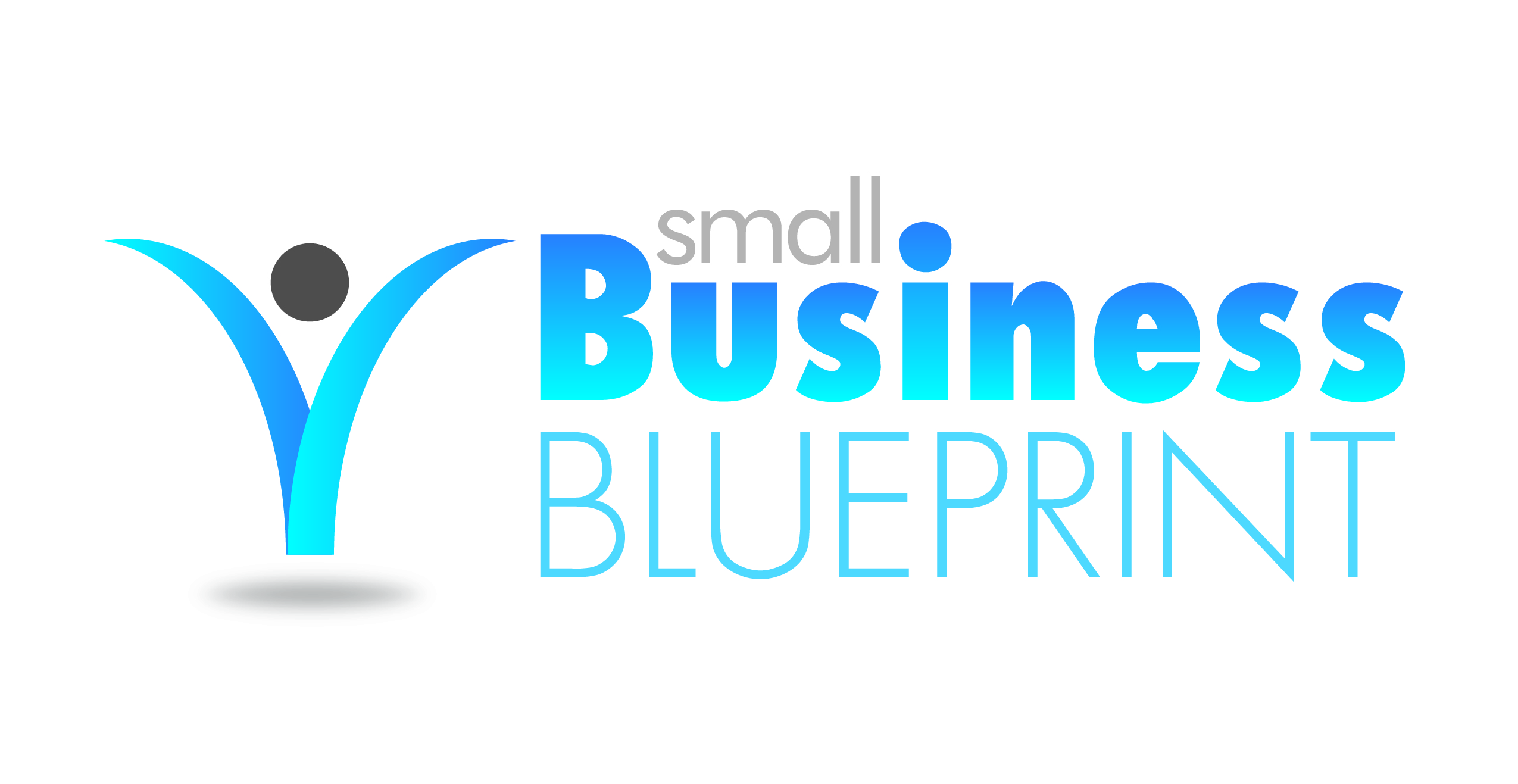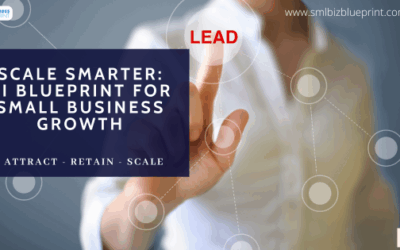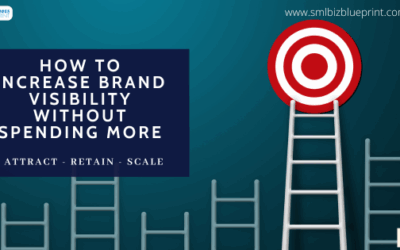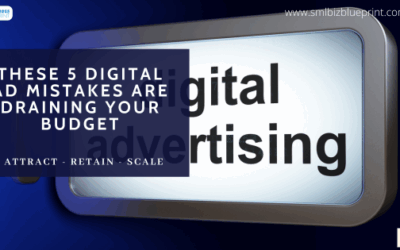Are you drowning in marketing tasks but can’t justify hiring another team member?
You’re not alone.
Small business owners and lean marketing teams face a familiar dilemma: growth demands more output—more content, more emails, more leads—but your time and resources are maxed out.
Hiring help is expensive. Outsourcing isn’t always reliable. And doing it all yourself? It’s not sustainable.
Here’s the truth: you don’t need a bigger team to scale your marketing. You just need smarter tools.
With today’s AI marketing tools, you can automate campaigns, generate content, personalise outreach, and capture leads—without increasing headcount.
Whether you’re a solo operator or managing a small team, AI gives you the power to grow faster, work smarter, and stay competitive.
In this post, you’ll discover:
Why small businesses are leaning into AI instead of hiring
What specific marketing tasks AI can handle better (and faster)
The most affordable, high-impact AI tools to start using now
How AI can fuel lead generation without manual follow-up
A step-by-step workflow to build your own AI-powered marketing engine
By the end, you’ll have a clear roadmap to scale your marketing, without hiring a single additional person.
Let’s dive in.
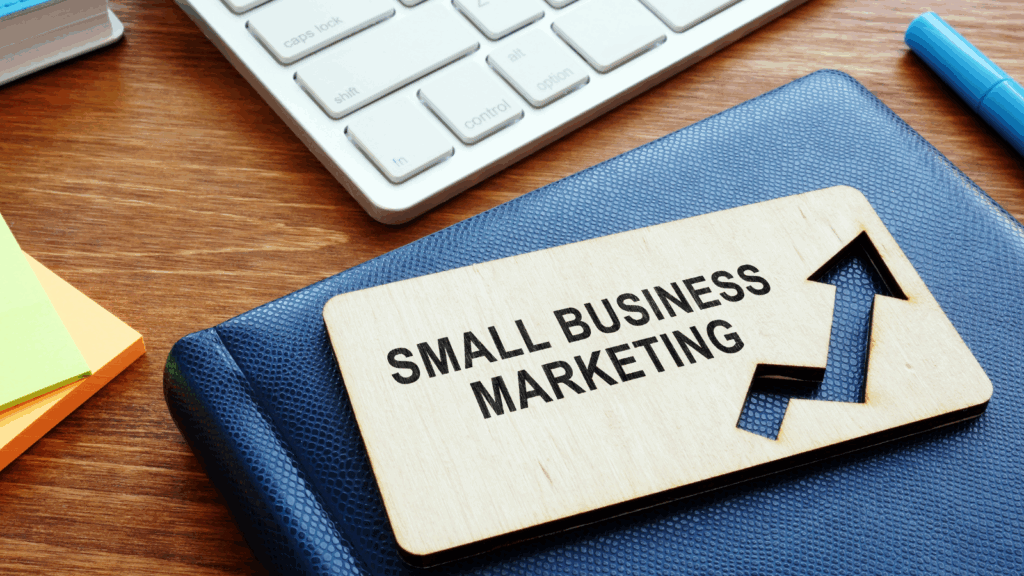
#1 Why Small Businesses Are Turning to AI for Marketing Automation
You used to think one great marketing hire would solve the bottleneck. But now you’re juggling strategy, approvals, ad spend, and five open tabs—all while trying to write a blog post before your next meeting.
You’re growing, but everything feels slow and heavy. It’s not a people problem—it’s a process problem.
And AI is the tool that finally breaks that ceiling.
Growing your business used to mean increasing your team. But for small business owners, that equation no longer adds up.
Hiring comes with high costs—salaries, onboarding, training, and management—not to mention the time drain. And even after hiring, tasks like content creation, social media management, email marketing, and lead generation still move slower than they should.
That’s why more small businesses are turning to AI marketing automation tools.
These tools allow you to scale marketing efforts without scaling your payroll.
You can now automate key tasks like content writing, campaign scheduling, lead scoring, and even customer engagement—all at a fraction of the cost of hiring an employee or agency.
Let’s look at the math:
Hiring a full-time junior marketer can cost anywhere from $60,000 to $80,000 annually, not including overhead.
AI tools like Jasper, Mailchimp, or Tidio cost between $29–$99 per month—totalling under $1,200 per year.
That’s over 90% cost savings, while still increasing output, responsiveness, and consistency across your marketing channels.
But it’s not just about saving money. AI provides something even more powerful: scalability without friction.
You can publish a blog post, send an email sequence, schedule a week of social content, and launch a retargeting ad campaign—all before lunch.
65% of small and midsize businesses say AI helped them reduce manual workloads and improve marketing productivity.– TechRepublic, 2024 SMB Report
AI doesn’t replace your creativity or strategy—it amplifies it.
Pro Tip:
Start by automating just one process, like your weekly email newsletter. Use an AI tool to draft the copy, segment your list, and schedule the send. Once you see the results, you’ll start seeing where else AI can take over.
Stay ahead of the curve!
Subscribe to our newsletter and never miss the latest in business growth and marketing strategies
#2 What Marketing Tasks Can AI Handle Better Than a Human?
The marketing assistant spends two days rewriting product descriptions. The copywriter drafts a blog that’s still missing something. The social media posts? Late again.
Your team isn’t lazy—they’re maxed out, and so are you.
Then one day, you try generating 10 variations of your email subject line with an AI tool… in under 60 seconds. That shift isn’t just faster—it’s game-changing.
One of the biggest misconceptions about AI is that it’s here to replace marketers. It’s not.
It’s here to replace manual, repetitive, time-consuming tasks—the kind that bog down your day and prevent you from focusing on strategy and growth.
For small businesses especially, AI levels the playing field. You can now execute marketing functions that once required a full team, with just one or two people and the right AI tools.
Here are the top marketing tasks AI handles faster, cheaper, and often better than humans:
Content Creation and Repurposing
AI tools like Jasper, Copy.ai, and Writesonic can generate long-form blog posts, ad copy, landing page headlines, and even product descriptions in minutes.
Need a blog turned into a series of tweets, an email, and a LinkedIn post? AI can handle that, too.
“Businesses using AI content tools report producing 3x more content in the same time frame.” – Content Marketing Institute
Social Media Scheduling and Engagement
AI platforms like Ocoya and Predis.ai can generate and schedule weeks of social posts—complete with captions, hashtags, and images. Some tools can even respond to DMs and comments using smart AI templates.
This ensures your brand stays visible and engaged without you spending hours each week online.
SEO and Keyword Optimisation
Tools like SurferSEO or MarketMuse analyse top-performing content and guide your AI writing tools to include the right keyword density, topic coverage, and headings, boosting your chances of ranking on Google.
SEO Tip: Integrating AI into your keyword strategy can cut research time in half and improve ranking consistency.
Email Campaigns and Personalisation
AI can write personalised emails for different customer segments, A/B test subject lines, and even adjust send times based on past behaviour. Platforms like Smartwriter.ai and Instantly.ai make this seamless.
AI-generated emails often outperform human-written ones—because they’re data-backed, structured for clarity, and tested at scale.
Ad Copy and Testing
Tools like AdCreative.ai and CopyMonkey can write dozens of ad variations in seconds, test them in-market, and refine them based on performance. This means faster campaigns and better results without hiring a copywriter.
AI doesn’t just accelerate tasks. It increases consistency, improves precision, and frees up human brainpower for higher-level work.
Pro Tip:
Pair your AI content generator with an SEO tool like Surfer or RankMath. This combo ensures that every blog post or landing page you create isn’t just fast—it’s optimised to rank and convert.
#3 Affordable AI Tools Every Small Business Should Be Using Right Now
One of the most powerful aspects of using AI to scale your marketing is that you don’t need enterprise budgets or custom software.
Today, even the smallest business can access powerful AI marketing tools at a fraction of the cost of hiring or outsourcing.
Whether you’re a solo founder, small team, or bootstrapped startup, these tools can automate content, optimise campaigns, manage leads, and personalise customer experiences—all without breaking the bank.
Here’s a breakdown of affordable, high-impact AI tools you can start using right now:
🛠️ Content Creation & Copywriting
Jasper.ai – AI copywriter for blogs, ads, emails, and more
Starting at $39/month
Copy.ai – Fast, multi-format copy generation
Free plan available
💡 Best For: Writing blog posts, social captions, landing page copy, and email sequences in minutes.
📩 Email Marketing & Personalization
Smartwriter.ai – Hyper-personalised cold email writing
From $59/month
Instantly.ai – Cold email outreach automation powered by AI
Free trial available
💡 Best For: Cold outreach, follow-up sequences, and saving hours of manual email writing.
📊 Social Media Scheduling & Post Generation
Ocoya – Schedule posts with AI-generated captions and visuals
Starting at $15/month
Predis.ai – Social content creation and scheduling in one
Free plan available
💡 Best For: Automating your entire social calendar and staying consistent on all platforms.
🧠 Lead Engagement & Customer Interaction
Tidio AI – Smart chatbot and automated support + lead capture
Free plan available, premium from $29/month
ManyChat – AI-powered Facebook & Instagram DM automation
Free plan with upgrade options
💡 Best For: Qualifying leads, responding to FAQS, and capturing contacts 24/7.
🔍 SEO & Optimization
SurferSEO – On-page optimisation using AI content audits
From $29/month
NeuronWriter – AI-assisted SEO writing and content planning
Affordable one-time license via AppSumo
💡 Best For: Writing SEO-optimised content that ranks.
🧾 What to Look for in a Good AI Tool:
Easy-to-use interface (no steep learning curve)
Integrates with tools you already use (Zapier, Shopify, Mailchimp, etc.)
Transparent pricing structure—avoid tools that hide costs behind demos
Pro Tip:
Start with just one tool in each category. Don’t overwhelm your workflow. For example: Jasper (writing), Ocoya (social), Tidio (chatbot). Once you’ve built momentum and ROI, layer in more.
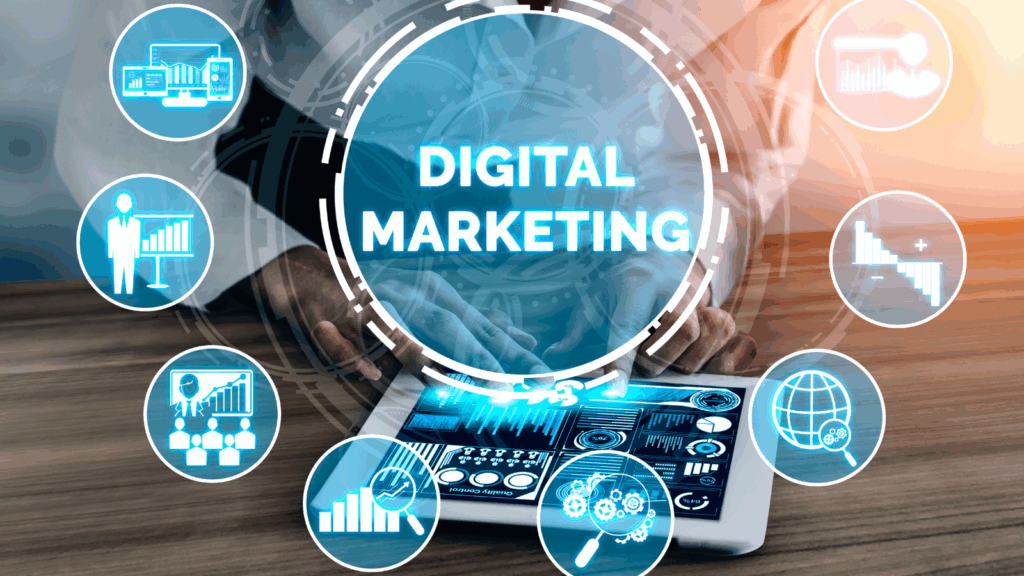
#4 Scaling Lead Generation with AI: What’s Possible Without a Bigger Team
Lead generation is the lifeblood of your marketing engine. But for most small businesses, it’s also one of the most resource-intensive parts of the process.
Manual outreach, endless follow-ups, sorting through unqualified leads—it’s a time suck.
The good news? AI can take over much of that load, without needing more people.
From finding the right prospects to crafting personalised outreach and even qualifying leads automatically, today’s AI tools can manage entire segments of your lead funnel while you focus on growth.
Hyper-Personalised Cold Outreach
AI can research a prospect, extract relevant details, and write highly personalised emails that feel human, not templated.
Smartwriter.ai and Instantly.ai pull in data from LinkedIn, websites, or your CRM to create custom intros and pain-point targeting in seconds.
💬 Example:
Instead of “Hey John, I wanted to reach out,” AI writes:
“John, I loved your recent podcast on scaling operations—especially your thoughts on optimising with data. Here’s how we can help…”
AI Chatbots That Qualify Leads While You Sleep
Tools like Tidio or ManyChat deploy AI chat assistants across your site or social media channels to:
Greet visitors
Ask qualification questions
Book calls or demos
Send FAQs or offers
You can even integrate them with your CRM or booking system to keep your pipeline full and moving, without human intervention.
“Businesses using AI chatbots report a 67% increase in lead engagement compared to static forms.” – Drift Conversational Marketing Report.
Lead Scoring and Segmentation
Not every lead is worth your time. AI platforms like HubSpot and ActiveCampaign use behaviour tracking and predictive scoring to:
Rank leads based on readiness to buy
Automatically trigger workflows (email sequences, reminders, retargeting)
Segment leads for tailored nurturing
This helps your small team focus only on high-probability opportunities, without combing through your entire contact list.
Automated Follow-Up Sequences
Once a lead opts in or engages, the clock starts ticking. AI automates timely, personalised follow-ups via email or SMS, based on:
What page they visited
What product they viewed
How they responded to the last message
No more “just checking in” emails—AI knows precisely when and how to follow up.
Pro Tip:
Map out your ideal lead journey from first touch to booked call. Then assign one AI tool to each stage—outreach, engagement, qualification, follow-up. The result? A self-running system that works while you sleep.
You’re still manually following up with leads from last week—while this week’s inquiries pile up. You want to be personal, but you also need to be prompt.
Every missed reply feels like lost momentum.
Now imagine if your website had a smart assistant that qualified every visitor, sent the right email, and booked discovery calls while you slept.
That’s not a dream. That’s AI doing the heavy lifting.
#5 Build a Complete AI-Powered Marketing Workflow in 5 Steps
By now, you’ve seen how AI can handle everything from content and social to lead generation and email campaigns.
But how do you tie all of this together into one seamless system?
That’s where building a complete AI-powered marketing workflow comes in.
It’s not about adding more tools—it’s about connecting the right tools to eliminate manual work, improve response time, and scale your results without hiring.
Here’s a simple five-step process to get started:
Step 1: Audit Your Current Marketing Workflow
Before layering on AI, identify your bottlenecks:
Where are you spending the most time?
Which tasks are repetitive and manual?
Where do leads fall through the cracks?
Common friction points include social posting, follow-up emails, content creation, and lead qualification. These are prime areas for automation.
Step 2: Select AI Tools That Solve Specific Bottlenecks
Choose tools based on your needs, not hype.
For example:
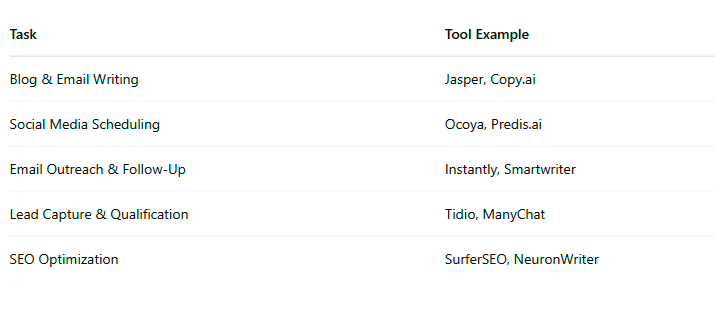
Look for integrations (Zapier, Make, native APIs) to connect them seamlessly.
Step 3: Automate Your Marketing Funnel
Design your system so AI tools hand off tasks like a relay race:
Lead Captured → AI chatbot qualifies and adds to CRM
CRM Tag Added → Triggers an AI-generated email sequence
Engagement Detected → Personalised follow-up sent or calendar invite triggered
No Response → Retargeting ad or reminder message launched
Each step happens automatically—no follow-up spreadsheets or sticky notes required.
Step 4: Set Up Performance Tracking
Use dashboards (like Google Looker Studio or HubSpot Analytics) to track:
Email open/click rates
Social engagement
Content production speed
Conversion rates per channel
Let AI-powered analytics show you what’s working—and what’s not.
Step 5: Iterate, Refine, and Optimise
The first version of your AI workflow won’t be perfect. That’s the point.
Refine your prompts for better AI copy
Add rules to your chatbot for more accurate qualification
Improve timing in your email sequence based on behaviour data
Each month, tweak one element. Within 90 days, you’ll have a lean and scalable system that outperforms most teams.
🧠 Mini Scenario
Example: A small ecommerce brand maps their funnel:
Tidio chatbot captures and qualifies new visitors
Jasper writes product emails
Ocoya schedules weekly content
SurferSEO guides blog strategy
Looker Studio monitors performance weekly
The founder focuses on high-level growth while AI handles 80% of the execution.
Pro Tip:
Don’t try to automate everything at once. Start with your most time-consuming task (e.g., lead follow-up or content creation), automate it completely, and then move on to the next. Layer gradually. Consistency beats complexity.
Don’t miss a beat in your business growth journey!
Join Pulse and stay ahead with expert tips and actionable advice every month.
Subscribe to Pulse Today
Conclusion
The old way of scaling meant hiring more people, juggling more tools, and spending more time on tasks that pulled you away from what matters—strategy, growth, and impact.
But today, AI changes that equation.
You’ve seen how small businesses are using AI to:
Automate repetitive marketing tasks with precision and speed
Create high-quality content in a fraction of the time
Generate and qualify leads 24/7 without lifting a finger
Use affordable, powerful tools instead of expanding headcount
Build a lean, scalable workflow that runs while you sleep
The key is not trying to replace your marketing team, but instead using AI to enhance your capabilities and free up your energy for high-level decision-making.
Whether you’re just starting with one tool or ready to build an end-to-end AI-powered system, the time to act is now.
The businesses that adopt AI early are the ones who’ll move faster, market smarter, and scale leaner.
✅ Your Next Step
🎯 Ready to implement your AI-powered marketing workflow?
You don’t need a bigger team. You need a more intelligent system. And with AI, you’re already halfway there.
7 Action Steps to Scale Your Marketing with AI (Without Hiring)
Audit Your Marketing Bottlenecks
Identify repetitive tasks stealing your time—content writing, emails, social media, lead follow-ups. Focus on what can be automated first.
Pick 1–2 High-Impact AI Tools
Start small. Choose tools that solve your biggest problem right now—e.g., Jasper for writing, Tidio for lead capture, Ocoya for social.
Automate a Single Workflow First
Don’t build a massive system on Day 1. Start by automating a single task like weekly email campaigns or social content scheduling.
Connect Tools with Smart Integrations
Use Zapier, Make, or native integrations to connect your AI tools to your CRM, email platform, or booking system for seamless flow.
Track Output & Performance Weekly
Set up simple dashboards to monitor key metrics—email open rates, content volume, lead conversion—so you know what’s working.
Refine Your Prompts & Sequences
Improve the quality of AI outputs by refining your inputs. Create custom prompts that reflect your brand tone and ideal customer.
Layer & Scale Gradually
Once one system is working, add the next—build your AI stack slowly, strategically, and only when ROI justifies it.
💬 “The best time to start automating your marketing was last year. The second-best time is now.”
FAQs
Q1: Can AI really replace a marketing team?
A1: Not entirely—but it can replace many of the repetitive, time-consuming tasks handled by junior marketers or VAs. AI allows small businesses to execute campaigns, create content, and manage outreach with minimal human effort, making your team more efficient, not obsolete.
Q2: What’s the first marketing task I should automate with AI?
A2: Start with the task that consumes the most time or creates the biggest bottleneck. For most businesses, this is content creation, email marketing, or social media scheduling. Automating just one of these can free up hours each week.
Q3: How much does it cost to implement AI in marketing?
A3: Most small businesses can start with under $100/month by using tools like Jasper, Tidio, and Ocoya. Many platforms also offer free plans or trials, making it easy to test before committing.
Q4: Will AI-generated content sound robotic or off-brand?
A4: Not if you train it well. Most AI writing tools allow you to set tone, audience, and context. You can even feed past writing samples or style guides to generate brand-consistent content. Always review and edit before publishing.
Q5: Do I need technical skills to use AI marketing tools?
A5: No. Most AI platforms are built for non-technical users. They offer intuitive interfaces, templates, and tutorials that make it easy to get started—even if you have no coding or automation experience.
Q6: How can I track ROI from AI-powered marketing?
A6: Use dashboards and built-in analytics to track metrics like open rates, conversions, lead volume, and content output. Compare your results before and after using AI tools to measure time saved, output increased, and leads generated.
Q7: What’s the risk of relying too much on AI in marketing?
A7: Over-reliance can lead to generic content or missed human nuances. The key is to pair AI’s speed and scale with your creativity and strategic insight. Use AI as a tool, not a replacement for judgment.
Other Articles
These 5 AI Mistakes Will Quietly Kill Your Business
AI Lead Generation System: 5 Steps to Automate Client Growth
Automate Your Outbound Sales Today With These 5 AI Voice Tools
